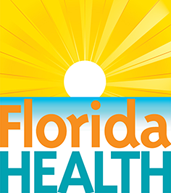It's a New Day in Public Health.
The Florida Department of Health works to protect, promote, and improve the health of all people in Florida through integrated state, county, and community efforts.
Chronic Disease Prevention
Bureau of Chronic Disease Prevention
The Bureau of Chronic Disease Prevention works toward a healthy Florida with the goal of reducing chronic conditions and diseases such as asthma, diabetes, epilepsy, heart disease, and stroke.
The bureau works with clinical and community partners to prevent diseases from occurring by promoting and supporting healthy behaviors and environments across the lifespan. We use evidence‐based health system strategies to improve chronic disease education, prevention, treatment, and management.
Six out of ten American adults have at least one chronic disease, and four in ten adults have more than one chronic disease.
Chronic diseases are those that go on for a long time and often don’t go away completely. They are among the most common and costly health problems; however, we often know how to prevent them. Chronic diseases affect people of all ages, races, social statuses, and ethnicities.
Risk factors are anything that increases the chance illness, harm, or death. An individual's beliefs and attitudes, what they do and don’t do, where they live and work, their age, and family health history are some of the reasons people may develop health problems.
You can lower your chances of getting a chronic disease by keeping a healthy weight, eating healthy food, getting enough exercise, avoid using tobacco, and limit alcohol consumption.
- Asthma
- Diabetes
- Epilepsy
- Heart Disease
- Preventive Health and Health Services Block Grant
- Stroke Prevention
Florida Asthma Program - Coordinates statewide efforts to reduce asthma and hospitalization rates, as well as increase the number of people with asthma receiving self-management education.
Diabetes Prevention Program - Helps Floridians prevent and manage diabetes and its complications, contributing to a healthier population, more productive workforce, and reduced burden on the health care system.
The program focuses on increasing awareness of prevention and treatment options, including various self-management education support programs.
The program also facilitates the Diabetes Advisory Council and provides oversight for the Insulin Distribution Program.
Epilepsy Services Program - Provides case management, diagnosis, care, and treatment services for individuals with epilepsy. The program provides education materials for individuals with epilepsy and their families, physicians, hospitals, and the public to raise awareness of local health services and community resources.
The program provides oversight of the Epilepsy Medication Program.
Heart Disease Prevention Program - Works with a variety of partners, including health systems, universities, national and statewide organizations, and community members to implement evidence-based strategies to reduce the morbidity and mortality from heart disease.
The focus is to address intervention strategies to improve early detection of hypertension and elevated cholesterol, and provide guidance on management and control.
Preventive Health and Health Services Block Grant - Federal funding that supports Florida in addressing unique public health needs and challenges with innovative and community-driven methods.
Program activities are centered around achieving health objectives outlined by the Healthy People initiative.
Florida Stroke Registry - Conducts ongoing surveillance of hospital stroke performance metrics made accessible through data use agreements with stroke centers, to track, measure, and analyze stroke performance. This survellience is critical to identifying potential improvements or gaps in stroke care.
In addition, the registery works with stroke centers and other partners to bring awareness about stroke prevention, and ways to identify warning signs and symptoms of strokes.



Connect with DOH